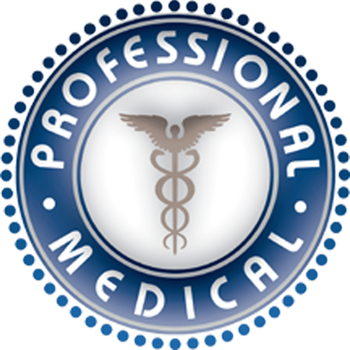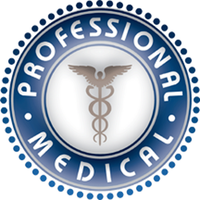Steps Forward, and Backward, in Treating Diabetes by Dan Hurley
 Catch the headline in The Times? “Warning Urged on Diabetes Pill,” it stated. “F.D.A. Proposes a Strongly Worded Label on Hazards of Heart Disease to User.” But it didn’t run this week, regarding the drug Avandia. The headline appeared almost exactly 35 years ago, on July 4, 1975, about a different drug for Type 2 diabetes that went through a strikingly similar controversy: tolbutamide. To this day, it and similar drugs for diabetes, the sulfonylureas, are still sold with a warning on “increased risk of cardiovascular mortality.”
Catch the headline in The Times? “Warning Urged on Diabetes Pill,” it stated. “F.D.A. Proposes a Strongly Worded Label on Hazards of Heart Disease to User.” But it didn’t run this week, regarding the drug Avandia. The headline appeared almost exactly 35 years ago, on July 4, 1975, about a different drug for Type 2 diabetes that went through a strikingly similar controversy: tolbutamide. To this day, it and similar drugs for diabetes, the sulfonylureas, are still sold with a warning on “increased risk of cardiovascular mortality.”
The more things change in diabetes treatments, it seems, the more they stay the same. About four months after that old headline ran, during my freshman semester at college, I went to the hospital one afternoon for nausea, figuring I had a bad case of flu, and learned I had Type 1 (juvenile) diabetes.
Not to worry, the doctor told me. In fact, he said, I was lucky. The old glass syringes that diabetics used to need were a thing of the past. “Now we have disposable plastic syringes,” he said. (Oh, joy.) Better yet, he said, a cure was coming any day. Pancreas transplants had been done in mice!
I was still waiting for that cure in 1983, when another Times article began by quoting a physician speaking to a group of Type 1 diabetics: “In your lifetime, you’re going to be cured.”
These promised cures and assorted breakthroughs turn out to have a long history. On May 6, 1923, The Times published an article by Dr. Joseph Collins under the headline: “Diabetes, Dreaded Disease, Yields to New Gland Cure; Previous Claims for Insulin Confirmed at Meeting of American Physicians.”
That was actually the third time the newspaper used the word “cure” in the headline of an article about insulin’s discovery. And it was easy to understand the excitement. Until the 20th century, diabetes was considered a rare disease: in 1866, for example, the reported death rate in New York City was 1.4 per 100,000 residents. By 1923, the rate had jumped to 22.9 per 100,000, and the idea of a cure was welcome indeed.
But as many knew even then, insulin wasn’t a cure. Sure, it instantly saved the lives of people like me, with Type 1 diabetes; but it was a lifelong treatment, carrying the ever-present risk of causing blood-sugar levels to fall dangerously low.
Moreover, it soon became apparent that insulin didn’t prevent long-term complications, and it didn’t work nearly so well in older, heavier people — those with the far more common version of the disease, Type 2.
So imperfect was this so-called cure that the death rate attributed to diabetes actually went up. From 22.9 deaths per 100,000 New York City residents in 1923, the rate reached 29 per 100,000 in 1932 and soared to 44.4 in 1947 — nearly double the rate before insulin’s discovery. (The nationwide death rate is now 24.2 for Types 1 and 2 combined, and diabetes is the sixth leading cause of death; in New York City, the rate is 18 per 100,000, and it is the fifth leading cause of death.)
By the 21st century, the promise of a cure for Type 1 seemed to have finally been fulfilled with the development of the Edmonton protocol, a method for transplanting insulin-producing beta cells into the pancreas. It looked for a few years like the real deal — until most of the transplanted cells stopped producing insulin in most recipients, and the patients had to resume taking injections.
For Type 2 diabetes, the drug industry has now produced some two dozen types of medications, even as the disease has become about 50 percent more widespread in the United States than it was in 2001, with some 23.6 million diabetics, or nearly 8 percent of the population, according to the Centers for Disease Control and Prevention.
Type 1 diabetes is rising sharply, too. A large and growing body of scientific literature suggests that it is now being diagnosed at about double the rate as in the 1980s, about five times the rate of the 1950s, and perhaps 10 times the rate of a century ago. Researchers at the C.D.C. tell me that it continues increasing by about 3 percent a year.
It hasn’t all been bad news for diabetes treatments, of course. With so many more people affected by the disease, the decline in death rates since the 1940s is reassuring.
Home blood-sugar tests weren’t even available when I learned I was diabetic, and they’ve since helped millions manage their disease better. Insulin pumps and continuous glucose monitors for Type 1 have also greatly improved control of blood-sugar levels. And an old standby for Type 2, metformin, appears to be one of the few drugs for the disease that actually prevents the loss of insulin-producing beta cells in the pancreas.
But given the disappointing history of many other treatments, some researchers have set out to find ways to prevent both forms of diabetes in the first place.
“Whatever the trigger is, we want to find it,” Dr. Judith Fradkin, director of the diabetes division at the National Institute of Diabetes and Digestive and Kidney Diseases, told me. Regarding Type 1, she said: “The rates are rising. Something has to be behind it. We need to find it. If we find it, that has tremendous implications for prevention.”
Studies are now under way to test promising strategies, whether by removing cow’s-milk formula from infants’ diet or by giving a vaccine that calms the immune system’s attack on the pancreas.
For Type 2, ambitious public-health campaigns are likewise seeking to prevent the disease’s spread, by lifting techniques from the anti-cigarette playbook: taxing unhealthy foods and drinks, limiting their availability and alerting consumers to their risks with calorie counts on chain restaurants’ menus (a strategy pioneered in New York City and recently passed as part of the national health-care legislation).
Nearly 35 years after my diagnosis, I’m doing fine, without any complications — and still without any cure. But these days, my hopes have shifted from cure to prevention, so that my 14-year-old daughter and the millions of others at risk never get diabetes in the first place.
Courtesy of the NYTimes
- Tags: Aging & Wellness News
- Professional Medical














Comments 0